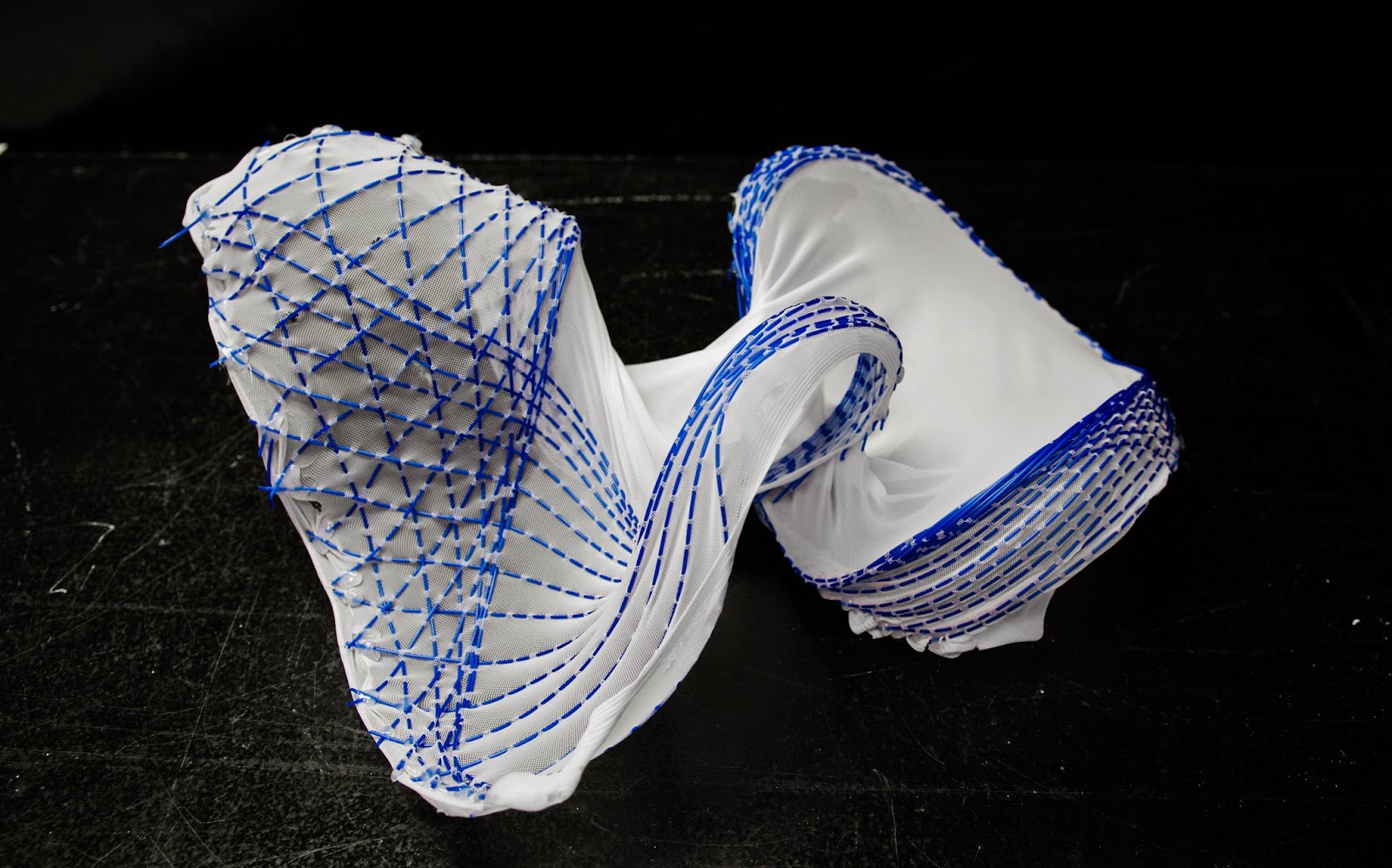HOMEOMORPHIC MANIFOLDS
Graduate - Thesis Project
In Progress
Winter 2015
Collaborators:
Andres Marin
Jawwad Nakai
Julie Wu
Critic:
Sandra Manninger
Through a synthesis of computational design, robotic aided fabrication and simple methods of construction, the research explores the manufacturing potential of textile architecture into a double curved surface without a mold. Mold-free design methodologies leverage lightweight composite material assemblies as a means of providing alternative solutions to issues of material transportation and intuitive modes of on-site assembly. In addition to its lightweight and mold-free qualities, textile challenges the modern understanding of a space that is temporal yet sensual. Gaudi's chain model of Colonia Guëll and Sean Ahlquist's work on algorithmic form-finding methods through tension-active systems serve as historical and contemporary inspirations for the translation of geometry to materialization.
The research pursues two perspectives in regards to the design and fabrication of double-curved surfaces using fabric composite material experimentation and implementation of textile structures in architectural settings. The first perspective examines methods of creating shells by embedding geometries and manipulating surface treatment of tensile and non-tensile fibers that choreograph the inherent material tensions within textile membranes to generate new tectonic principles. The latter objective investigates the spatial ramifications of integrating performance requirements into architectural practice. The analyses of textile logic and processes employed in the fabrication of a mold free shell suggests flexible implementation portable to other domains such as structure, lighting and acoustics.















